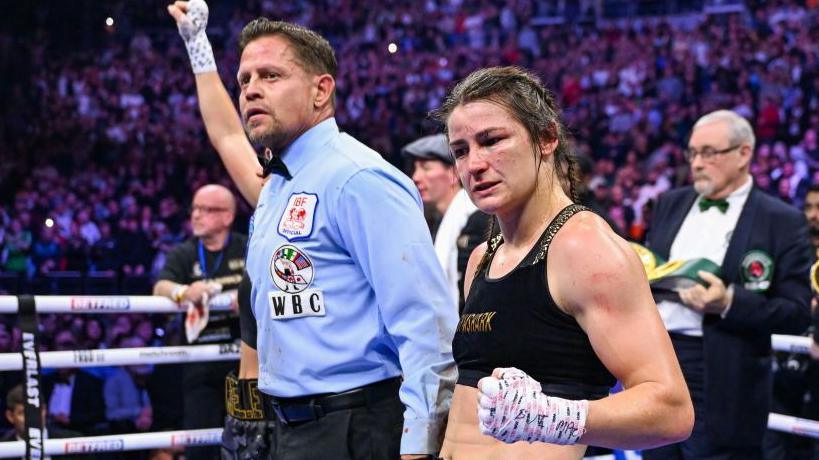How do judges score a boxing fight?
- Published
Three judges typically determine the outcome of a boxing contest if the fight hasn't ended in a stoppage.
The scoring of a fight is subjective and often leads to differences in scorecards, which has caused plenty of controversy in the past.
Judges decide on a 'winner' of each individual round using the 10-point system. Ten points are awarded to the fighter deemed to have been more successful, and nine would usually go to their opponent.
If a fighter is knocked down, receives a standing count or is penalised for a foul by the referee, they are deducted a further point.
A standing count was given to Tyson Fury in his first fight with Oleksandr Usyk in May, 2024 after the referee ruled the ropes had kept him from being knocked down.
There are also rare cases in which a dominant fighter would be awarded a 10-8 round, even if they didn't score a knockdown.
If both fighters are knocked down the round will be declared a draw or 10-9 to the more successful fighter.
Judges can score a round 10-10 if they feel neither fighter was a clear winner of the round.
How does a judge determine the winner of a round?
This is where there can sometimes be controversy as judges can have certain preferences when they are scoring a round.
Landing hard, accurate punches and causing damage are the most obvious ways of being successful.
Aggression - if used in an effective way - can sometimes be the difference if both fighters have landed a similar number of punches.
Judges also appreciate if a fighter has a good defence, is able to avoid the majority of their opponent's punches, and has control of the fight.
'And your winner'

The judges' scorecards determine the winner in boxing if a fight goes the distance
If the fighters make it to the final bell, judges will add up the scores of each round.
If a fight goes the full world championship distance, the maximum score a male boxer can get is 120 (12 rounds). In women's boxing, it is 100 (10 rounds).
The winner of the bout will then be announced.
These are the most common outcomes:
Unanimous decision - when all three judges score in favour of one boxer.
Split decision - when two of three judges score in favour of one boxer and the third judge favours the other fighter.
Majority decision - when two of the three judges score in favour of one boxer and the third judge scores it a draw.
Draw - when all three judges score the fight a draw.
Majority draw - when two judges score the fight a draw and one judge favours one boxer.
This article is the latest from BBC Sport's Ask Me Anything team.
More questions answered...
Get in touch
Send us your questions